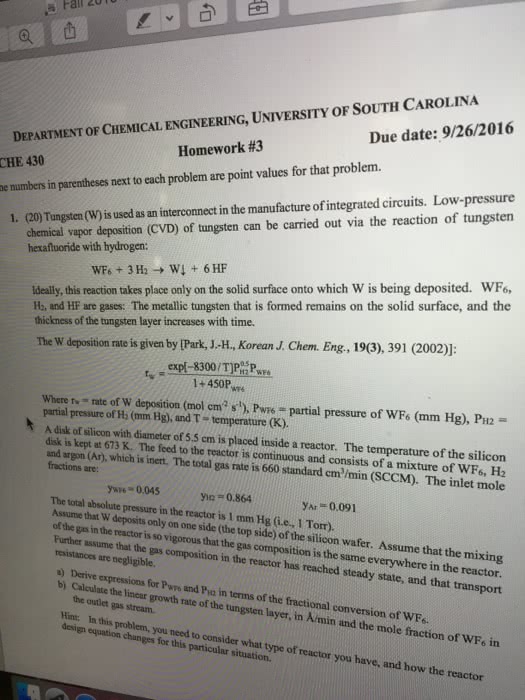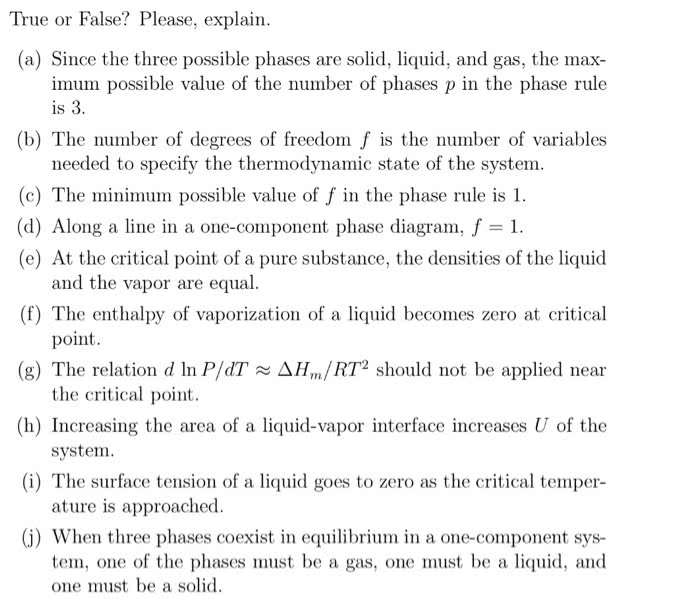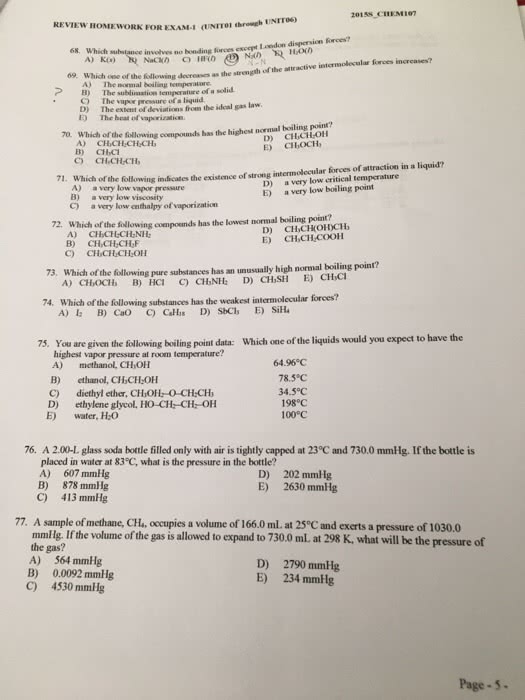CHEM 001 Lecture Notes - Lecture 24: Vaporization, Boiling Point, Supercritical Carbon Dioxide
Document Summary
An increase in surface area increases both the rate of vaporization and the rate of condensation and p vap is unaffected. By changing t to 1/t and p to ln(p) If hvap is known and pvap is known for one temperature, this equation gives p vap at any temperature. If p vap is known for two temperatures, h vap can be calculated. Heat of fusion - the energy required to melt one mole of a solid. Vaporization breaks all imf"s (gas molecules have no interaction) Heat of sublimation - the energy required to sublime one mole of a solid. Changes of state: imf"s break, not chemical bonds. The t of water is measured during constant heating. The plot gives water"s melting and boiling points. Slopes differ because specific heats differ for each phase. Phase diagrams display phases as a function of temperature and pressure. Most substances have at least three phases.




